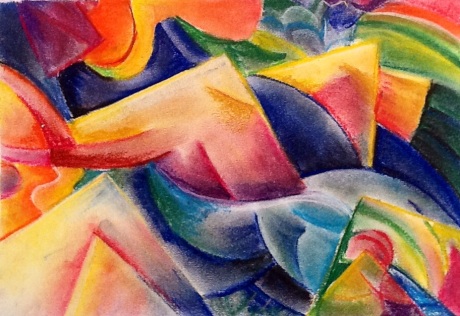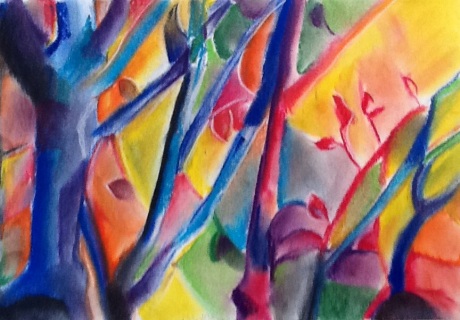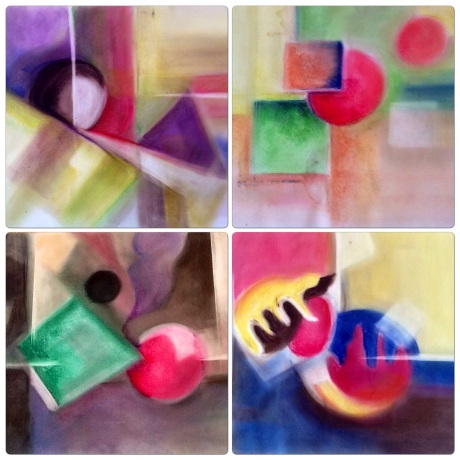Non- evocative objects – or in simple words – the use of shapes such as triangles and squares can be turned into a painting. Following the masters of 20th century Cubism, here I copied the style of Gino Severini using his meticulous method of creating entire compositions with cubes, triangles and curves. The colours are in harmony – light pastels, almost rainbow like.

Copy of Gino Serverini, 11 x 17″, Dry Pastels on paper
I love using dry pastels to create a template for an acrylic or oil painting. Smudges allow the colour to flow across the page, blending different shades together seamlessley. Don’t forget to use a fixative once you complete a dry pastel painting – otherwise the colours will blow away!
From non-evocative objects, to evocative objects – that is forms and objects we recognize, I completed this sketch of tree branch shadows falling on a shed in my backyard. Happy Spring/Summer!

Rainbow Shadows, 11×17″ Dry Pastel on Paper
Many years ago, under my mentor, Mansur Rahi – a most talented cubist from the Sub Continent – I learnt how to create different compositions using colours and non-evocative shapes. Here are some of my examples:


I love the four smaller images. Very moving.